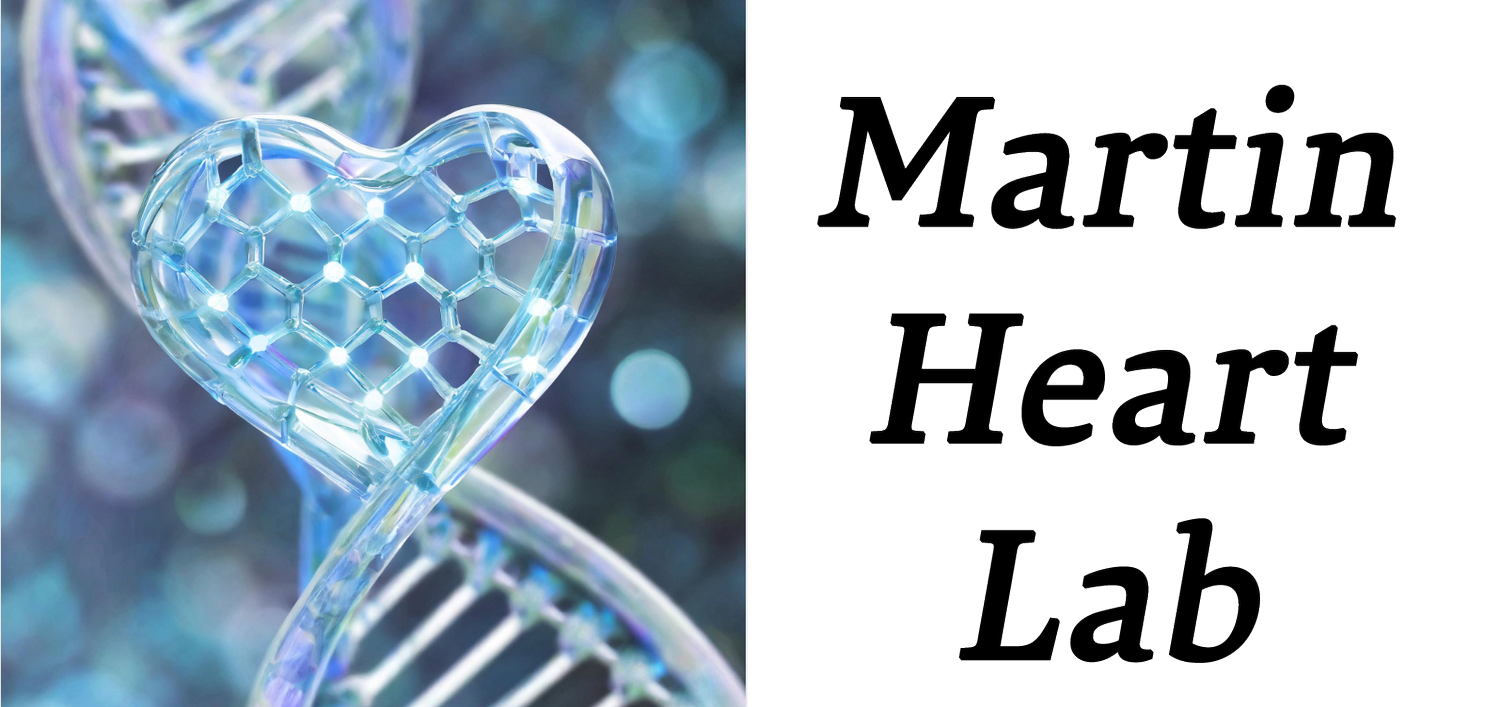Dr. Meng’s Gene Therapy Paper Published!
Reversible YAP activation shows promise for treating ischemic heart disease.
We're excited to share our latest work, just published in Nature Cardiovascular Research, led by Dr. Fansen Meng in the Martin lab. This study introduces a novel gene therapy approach that has the potential to transform the treatment of heart attacks.
The Challenge
When you have a heart attack (myocardial infarction), your heart muscle cells (cardiomyocytes) die and don't regenerate. This irreversible damage impairs cardiac function and affects millions of people worldwide. While we've previously shown that activating YAP in cardiomyocytes can stimulate regeneration, controlling this activation precisely has been challenging.
CM-YAPon: An On-Demand Gene Therapy
We developed CM-YAPon, an AAV9-based gene therapy that enables transient and controllable expression of active YAP (YAP5SA) in cardiomyocytes. Here's how it works:
The therapy utilizes a modified gene construct that produces only functional YAP protein when exposed to the small molecules LMI070 or Risdiplam. Risdiplam is an FDA-approved splicing modulator that was tested for the treatment of spinal muscular atrophy. When we give a mouse a single dose of LMI070, it triggers YAP5SA expression within 24 hours, which then naturally declines by day 4.
Two Paths to Protection
We tested CM-YAPon in two experimental scenarios:
1. Therapeutic Protocol (Treatment After Heart Attack) When we activated YAP5SA after myocardial infarction (with 30-50% viral transduction efficiency), we saw:
Rapid improvement in cardiac function within 3 days
Cardiomyocytes re-entering the cell cycle
Reduced scar tissue formation
Reprogramming of the cardiac microenvironment
2. Protection Protocol (Prevention Before Heart Attack) A single dose of LMI070 given 2 weeks before MI provided:
Sustained cardioprotection lasting at least 2 weeks
Reduced cell death across multiple cardiac cell types
Better cardiac function and reduced remodeling 8 weeks after MI
The Cellular Mechanism
Our single-cell RNA sequencing revealed that YAP activation creates a protective cardiac microenvironment through cell-cell communication:
Fibroblasts adopt a transiently activated state (expressing periostin) and secrete IGF1 and BMP6, sending pro-survival signals to cardiomyocytes
Macrophages shift to an anti-inflammatory reparative state (Trem2+/Spp1+) and secrete factors like NRG2 and adenosine that protect cardiomyocytes
Cardiomyocytes become primed to receive protective cues from specific fibroblast and macrophage clusters (FB2 and MAC2)
The beauty of this approach is that a brief pulse of YAP activation is sufficient to reprogram the microenvironment in a way that provides lasting benefit.
Why This Matters
CM-YAPon represents a significant advance because:
It's reversible: Unlike constitutive YAP overexpression (which can be toxic), we can control when and how long YAP is active
It's translatable: AAV9 gene therapy is already FDA-approved for other conditions, and the splicing modulator approach is clinically validated
It's versatile: The same viral construct could potentially be reactivated with additional doses of LMI070 if needed—imagine being able to "turn on" heart repair after a second heart attack
It works prophylactically: Pre-treatment provides protection, opening possibilities for high-risk patients
Current Limitations and Future Directions
We're transparent about the challenges that need to be addressed:
The current system produces a truncated YAP fragment (YAP5SA 72-488) that lacks activity, though it appears well-tolerated
Optimal dosing needs refinement to balance efficacy and safety
The protective effect is time-limited (effective for ~2 weeks)
We need to test this in larger animal models before considering clinical translation
Future work will focus on understanding the molecular mechanisms in greater detail and determining whether repeated dosing can provide long-term benefits.
The Bottom Line
CM-YAPon demonstrates that combining AAV gene therapy with pharmacological control of RNA splicing creates a powerful platform for cardiac regenerative medicine. By transiently activating YAP, we can trigger a cascade of beneficial cellular changes that improve outcomes after heart attack—both as a treatment and as a preventive strategy.
Publication Details:
Title: Gene therapy CM-YAPon protects the mouse heart from myocardial infarction
Authors: Fansen Meng, Jeffrey D. Steimle, Elizabeth Straight, Rich G. Li, Yuka Morikawa, Zohaib Iqbal, Bing Xie, Jun Wang, Wyatt G. Paltzer, Yi Zhao, Chang-Ru Tsai, Lin Liu, Maggie Lim, Rita A. Schack, Daniel Ramirez, Katherine Carlson, Vaibhav Deshmukh, Jason M. Karch, Robia G. Pautler, Xiao Li, James F. Martin
Journal: Nature Cardiovascular Research, 2025
DOI: 10.1038/s44161-025-00744-9
Funding: This work was supported by the National Heart, Lung, and Blood Institute; the American Heart Association; the Don McGill Gene Editing Laboratory; and the Vivian L. Smith Foundation.

